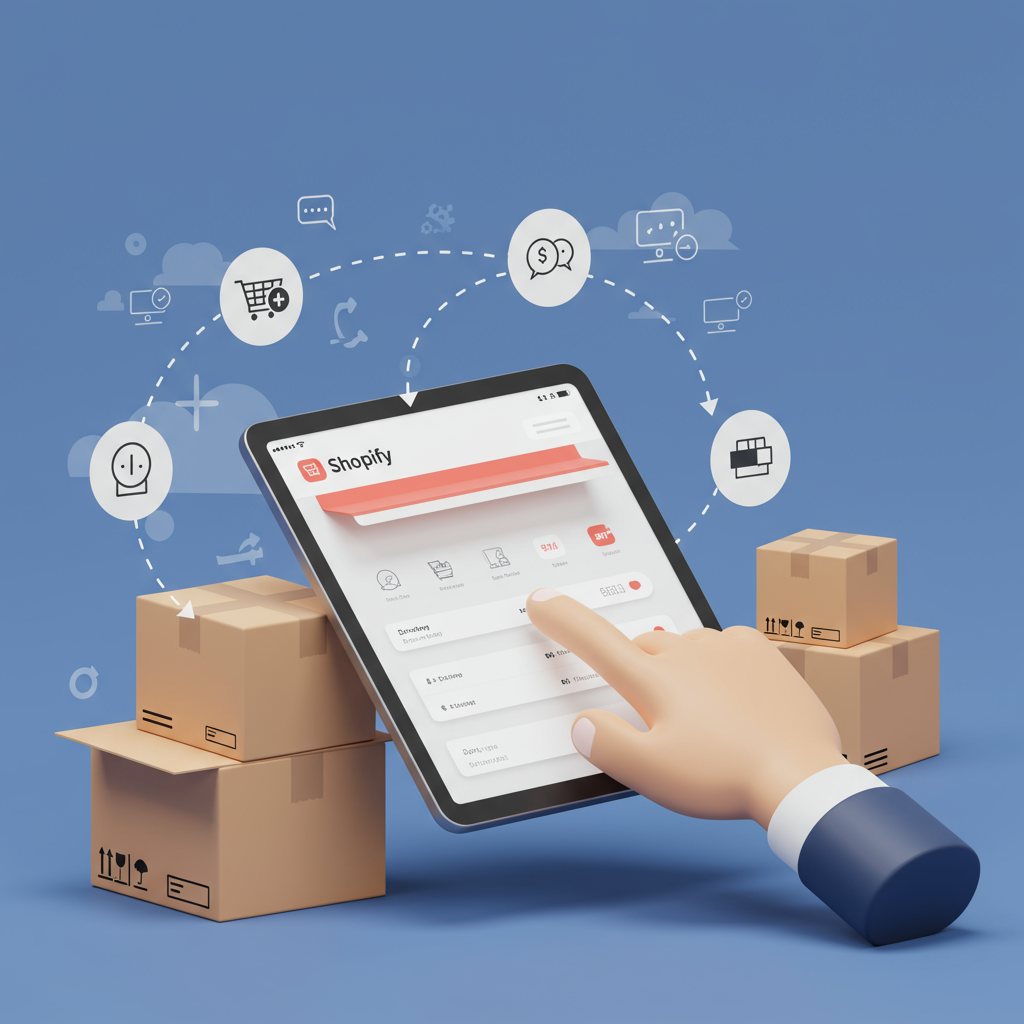Streamline Your Operations, Save Time, and Delight Customers
Hello fellow Shopify merchants! I’m here today to talk about a game-changer for your e-commerce business: fulfillment automation.
As your store grows, manually handling every order, every shipping label, and every customer update can quickly become overwhelming and unsustainable.
That’s where automation steps in, transforming tedious, repetitive tasks into seamless, hands-off processes that work tirelessly for you.
But what exactly is fulfillment automation? Simply put, it’s the strategic use of technology to streamline and execute various stages of your order fulfillment process without significant manual intervention.
From the moment a customer clicks ‘buy’ on your Shopify store to the package arriving safely at their door, automation can touch almost every single step.
So, why should you, a busy Shopify merchant, care deeply about automating your fulfillment? The benefits are truly compelling and directly impact your bottom line and customer satisfaction.
Firstly, it’s a massive time-saver. Imagine reclaiming hours spent on mundane data entry, printing individual labels, or manually sending tracking emails. This time can be reinvested into growth.
Secondly, automation drastically reduces human error. No more typos in shipping addresses, incorrect product quantities being shipped, or missed order details that lead to costly mistakes.
Thirdly, it enables unparalleled scalability. As your order volume inevitably increases, your automated system can handle the growth effortlessly without necessarily needing to hire more staff immediately.
Fourthly, it significantly boosts customer satisfaction. Faster, more accurate deliveries, coupled with proactive and timely communication, lead to happier customers and, crucially, repeat business.
Finally, it can lead to substantial cost reductions by optimizing shipping choices, minimizing errors that result in expensive returns or re-shipments, and improving overall operational efficiency.
Let’s dive into the key areas within your Shopify fulfillment process where you can implement powerful automation strategies.
Order processing is a prime candidate for automation. You can automate tagging orders based on specific criteria, like product type, shipping method, customer segment, or even order value.
This intelligent tagging helps immensely in routing orders to the correct fulfillment location, assigning them to specific team members, or triggering subsequent automated actions.
Inventory management is another critical area where automation shines. It can automatically update stock levels across all your sales channels in real-time, effectively preventing frustrating overselling.
Automation can also trigger low-stock alerts, prompting you to reorder popular items well before you run out, ensuring you never miss a sale due to stockouts.
Shipping automation is perhaps the most impactful. This includes automatically generating shipping labels, selecting the best carrier based on predefined rules (cost, speed), and even scheduling pickups.
Customer communication can also be seamlessly automated. Think about sending personalized order confirmations, shipping updates with live tracking links, and timely delivery notifications.
Even returns management can be significantly streamlined, with automated generation of return merchandise authorizations (RMAs) and pre-paid return labels, making the process smoother for both you and your customers.
Now, how do you actually achieve this level of sophisticated automation within your Shopify ecosystem? There are several powerful tools and strategies at your disposal.
Shopify Flow is an incredibly powerful, built-in automation tool available to Shopify Plus merchants, and increasingly to other plans. It’s your native automation powerhouse.
With Flow, you can create custom workflows using a simple ‘trigger, condition, action’ logic. For example: ‘When an order is paid (trigger), if the order total is over $100 (condition), then add a ‘VIP’ tag to the order (action).’
You can use Flow to automatically send internal emails, create tasks for your team, update inventory, or even integrate with other apps, making it incredibly flexible for diverse needs.
Beyond Shopify Flow, a vast and robust ecosystem of third-party apps exists. Shipping apps like ShipStation or Shippo can automate label creation, carrier selection, and tracking updates.
Specialized inventory management apps can sync stock across multiple warehouses or sales channels, while comprehensive ERP systems can integrate your entire business operation for end-to-end automation.
For those with higher order volumes or complex logistics, integrating with a Third-Party Logistics (3PL) provider is a common and highly effective automation strategy. They handle storage, picking, packing, and shipping for you.
When implementing automation, I strongly recommend starting with a thorough audit of your current fulfillment process. Identify the most time-consuming, repetitive, or error-prone tasks.
Then, choose the right tools that align perfectly with your specific needs, budget, and existing Shopify setup. Don’t try to automate everything at once; incremental steps are key.
Set up your rules and workflows carefully, paying close attention to every detail. Always test them thoroughly with dummy orders before going live to catch any unforeseen issues.
Remember, automation isn’t a ‘set it and forget it’ solution. Regularly monitor your automated processes for efficiency, accuracy, and opportunities for further optimization.
What do you think about the potential of fulfillment automation for your Shopify store? I’d love to hear your thoughts and experiences!
My best advice is to start small. Automate one or two key tasks first, see the tangible benefits, and then gradually expand your automated workflows as you gain confidence.
Document your workflows meticulously. This helps immensely with troubleshooting, understanding dependencies, and onboarding new team members as your business grows.
Always keep the customer experience at the forefront of your automation efforts. Automation should enhance, not detract from, their journey with your brand.
While the initial setup can sometimes seem daunting, the long-term benefits of automated fulfillment far outweigh the initial effort and investment.
It frees up your valuable time to focus on strategic growth, innovative marketing, and exciting product development – the things that truly move your business forward and differentiate you.
So, take the leap! Explore the powerful tools available within and beyond Shopify, and start automating your fulfillment today. Your future self (and your delighted customers) will undoubtedly thank you for it.






